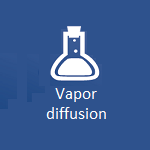![[ Polski ]](../../images/POLA001.gif)
![[ Deutsch ]](../../images/GERM001.gif) Capability variants of the Heat Transfer and Vapour Diffusion simulation software AnTherm
Capability variants of the Heat Transfer and Vapour Diffusion simulation software AnTherm
Capabilities of the program follow the license type. Pricing of the licenses follow the same structure as the capabilities.
| AnTherm Capability | Dynamic | Performance | ||||||
| 3D+2D three dimensional | 2D two dimensional | VAPOUR option | HARMONIC option | TRANSIENT option | DONGLE option | MULTICORE option | STEREO3D option | |
| without cell limit (no-limit) | available | available | available | available | available | available | available | available |
| Max. 1.000.000 cells | available | available | available | available | available | available | available | available |
| Max. 300.000 cells | available | available | available | available | available | available | available | available |
| Max. 50.000 cells | available | available | available | available | available | available | --- | available |
| Max. 10.000 cells | --- | available | available | available | available | available | --- | available |
| License duration | Perpetual or Time Restricted (1 year, starter) license rental | |||||||
| Updates | Updates or recurring Update-Subscription (Software Care) | |||||||
| Academic | School- and Academic (Educational), special arrangements | |||||||
Cell count / Number of Nodes / Equation Size
At first the maximum number of cells appearing in the calculation model is used to select the capability (the number of elements used for modelling some component is not restricted).
The number of cells defines the size of the system of linear equations to be solved (real for steady state calculation, complex when dynamic, time dependant, transient, periodic, harmonic problem is considered).
The number of nodes used for the evaluation of results is about the eightfold to the number of cells (in 2D it is fourfold).
| Maximum number of cells | Maximum number of nodes evaluated | Explanation / Use Cases / Recommendation |
|---|---|---|
| 10.000 | just above 40.000 | Entry-Version; sufficient for draft, not detailed, modelling |
| 50.000 | just above 200.000 | Sufficient to calculate the majority of 2D cases, including such in connection with ground |
| 300.000 | just above 1.200.000 | Sufficient to calculate the majority of large 2D cases |
| 1.000.000 | just above 4.000.000 | This version is sufficient for large and sophisticated 2D cases |
| No-Limit | just above the eightfold of the actual number of cells | The full 2D version; Allows modelling of very large/very detailed cases; the maximum number of nodes is only limited by the available hardware |
| Each three dimensional version does also include the 2D version of same maximum number of nodes. | ||
| Maximum number of cells | Maximum number of nodes evaluated | Explanation / Use Cases / Recommendation |
| 50.000 | just above 400.000 | Entry 3D version; sufficient for draft, not detailed, 3D modelling. Sufficient to calculate the majority of 2D cases |
| 300.000 | just above 2.400.000 | Sufficient for the majority of 3D standard-cases and majority of large 2D cases |
| 1.000.000 | just above 8.000.000 | This version is sufficient for large 3D cases and for large and sophisticated 2D cases |
| No-Limit | just above the eightfold of the actual number of cells | The full 3D and 2D version; Allows modelling of very large/very detailed cases; the maximum number of nodes is only limited by the available hardware |
It's needless to say that you can move on and move from lower capabilities to higher upon your needs. There is upwards compatibility, i.e. AnTherm projects created with the software version of lower capabilities can be further read in, evaluated and processed. When moving to higher capability versions there is no additional user attention required because the user interface is identical in all versions.
Additional extensions / options
The capabilities of above basic versions of steady state heat transfer analysis can be extended by adding appropriate options:
| VAPOUR - extension / option: |
| Used for the analysis of 2-dimensional and (with three dimensional version) 3-dimensional vapour diffusion at constant (steady state) boundary conditions (the maximum number of equation cells is equal to the basic version). The added value of that option results from fast and efficient method of analysis of core condensation risk by comparing saturated and partial vapour pressure. |
| The VAPOUR option of AnTherm is being activated by additional license activation keys (DAMPF2DIM, DAMPF3DIM) and is offered to licensees of the software AnTherm in its latest version. Input of μ-values and input of relative air humidity is available within this option only. Calculating (solving) the vapour diffusion equation can be controlled within solver parameters (if the user has the rights to use the VAPOUR option). |
| HARMONIC (periodic, transient)- extension / option: |
| Used for 2- und 3-dimensional analysis of dynamic, transient problems while considering heat capacity and storage processes under an assumption of changing, time dependant, periodic (harmonic) boundary conditions. The calculation of harmonic thermal coupling coefficients (e.g. amplitude and phase lag) is accomplished directly, i.e. without the need to know nor to provide any boundary conditions. Results can be used directly by other applications like PHPP (sheet "Ground"), THESIM_Earth, etc. The added value of this option results from cost effective ability to precisely analyse dynamic heat capacity and storage processes, for example in case of components in contact with ground. |
| The harmonic option of AnTherm is activated by additional license activation key (HARMONIC) and is offered to licensees of the software AnTherm in its latest version. Input of ρ- and c-values (mass density and specific heat capacity) is available within this option only. Calculating (solving) the dynamic, transient, harmonic equation for period lengths of one year and/or one day can be controlled within solver parameters (if the user has the rights to use the dynamic option). |
| TRANSIENT (time dependant evaluations and animations)- extension / option: |
| Together with and in addition to the HARMONIC option this extension provides methods for thermal analysis of dynamic behaviour of building constructions when the boundary conditions are changing in time periodically and effects of heat capacity (heat storage) must be considered. The transient boundary conditions, input as series of point values (e.g. hourly values), mean values (e.g. monthly means), switch operations (e.g. heating) etc. are passed for harmonic Fourier analysis and, together with respective base solutions, including higher harmonics also, result in synthetic temperature distributions at any arbitrary point in time of the periodic problem. The added value of this option results from practical, efficient and quick documentation of complex dynamic processes within building constructions. |
| The transient option of AnTherm is activated by additional license activation key (TRANSIENT) and is offered to licensees of the software AnTherm in its latest version exclusively in additive connection to the harmonic option (HARMONIC). Calculating (solving) the dynamic equation with higher harmonics and the input of time dependant, periodic boundary conditions is available within this option only. |
| MULTICORE (multi processor Solver)- extension / option: |
| Provides ability to run the solver on multiple processors or processor cores. The additional value created with this option is created by cost effective performance boost by utilizing technologically available resources of employed hardware. |
| STEREO3DVIEW (binocular)- extension / option: |
| Stereoscopic, binocular display of three dimensional evaluations is available with that option. There are several stereoscopic modes of operation available, some require additional hardware. But even Anaglyph, with very simple Red-Cyan or Red-Blue glasses one can easily receive immersive experience of real 3D depth. |
| Hardware DONGLE - extension / option: |
| The add-on option – Dongle-Licensing – provides additional value to you by allowing alternating use of AnTherm license on multiple computers. The option replaces the binding of the license to the network adapter of one specific computer with the binding of the license to the mobile USB-Dongle. The AnTherm software itself can be installed typically on up to five computers and can be used on that computer which has the USB-Dongle installed (plugged in). While moving to another workplace computer the dongle shall be removed and plugged into the other computer. After such “transfer” of the dongle to another computer AnTherm shall be started and used at that other workplace – the license “travels with the Dongle”, a kind of manual “floating license”. Already known procedures of the software installation and activation (i.e. installing the license file) stay unchanged. The number of hardware bindings is equivalent to the number of licenses to use AnTherm. The combination of the two hardware binding variants (network adapter and mobile dongles) is possible upon request also. This solution provides direct additional value to you as a cost effective alternative to multiple licenses. |
Interested?
Contact
us for more information.
Or try and evaluate the demonstrational version just now!




















